As you gaze at the dashboard of your Chevy Tahoe, the warning lights stare back at you like a cryptic message, urging you to decipher their secrets. You’ve probably seen them before – the airbag symbol, the battery icon, and others – but do you know what they’re trying to tell you?

These enigmatic symbols are more than just a nuisance; they’re a call to action, warning you of potential issues that could compromise your safety on the road. But what do they really mean, and how can you address them before it’s too late?
Quick Navigation
Warning Lights and Indicators
Your Chevy Tahoe’s dashboard is equipped with a range of warning lights and indicators that alert you to potential issues or system activations.
Service Parking Brake Symbol
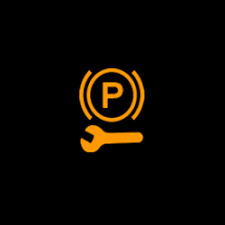
During a vehicle inspection, it’s essential to familiarise yourself with these warning symbols to guarantee your safety on the road. The service parking brake symbol, for instance, indicates a fault with the electric parking brake, requiring servicing.
Airbag Symbol

The airbag symbol signals a fault with the airbag system, often related to loose connections or objects lodged in belt buckles.
Battery Symbol
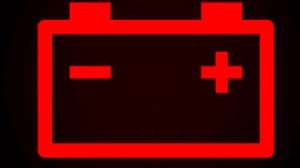
The battery symbol indicates a fault with the electrical charging system, often due to a failing alternator or ageing battery.
System Faults and Causes
One common theme among many of the Chevy Tahoe’s warning lights is that they’re often triggered by specific system faults or causes.
When you see a warning light, it’s essential to understand the underlying fault or cause to address the issue effectively. Fault diagnostics is key to identifying system malfunctions, which can range from loose connections to faulty sensors or worn-out components.
For instance, an illuminated airbag light may indicate loose connections under the front seats or objects lodged in belt buckles. In a like manner, a battery warning light could be triggered by a failing alternator, wiring connections, or an ageing battery.
Action to Take
What should you do when a dashboard warning light illuminates in your Chevy Tahoe?
Take immediate action to guarantee your safety and prevent further damage to your vehicle.
Airbag Warning Light
For airbag and brake system warnings, have your vehicle inspected and serviced as soon as possible.
Battery Warning Light
If your battery warning light comes on, switch off non-essential electrical equipment to extend driving ability and have the fault diagnosed.
For other warnings, continue driving with caution and schedule a vehicle inspection according to your Service Schedule.
Remember to prioritize your safety and the integrity of your vehicle by addressing warning lights promptly to ensure your well-being.
Engine and Performance
If your Chevy Tahoe’s engine is running hot, switching off the air conditioning and switching on the heating can help cool it down. This simple trick can prevent engine overheating and potential damage.
Engine Coolant Warning Light
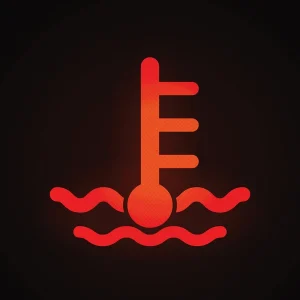
Additionally, keep an eye on your engine coolant gauge, which works in tandem with the warning light. If the gauge indicates overheating but the warning light doesn’t, it may be a sensor issue.
Don’t ignore engine coolant leaks, as they can cause serious damage. Proper engine performance is vital for fuel efficiency, so regular maintenance is key.
Driver Modes and Suspension
Your Chevy Tahoe offers several driver modes to tailor your driving experience.
You can choose from Sports Mode, Snow Mode, Terrain Mode, Off-Road Mode, and Tow/Haul Mode, each designed to optimize performance in different conditions.
Air Suspension Warning Light

Additionally, the air suspension system allows you to adjust the ride height to suit your needs.
The system has several modes, including Maximum Ground Clearance, Increased Ground Clearance, Lowered Air Suspension, and Air Suspension Service Mode.
When you switch between modes, the air suspension symbols will flash green and alert you to the change.
You’ll also receive notifications when the vehicle is in Service Mode or Alignment Mode, or when it’s raised to maximum ground clearance height.
Airbag and Safety Features
Airbag sensors monitor your Chevy Tahoe’s interior, detecting potential crash scenarios to deploy the airbag system when necessary.
Airbag Warning Light
These advanced sensors work in tandem to create a safety net, providing an added layer of protection in the event of a collision. If the airbag light on your dashboard illuminates, it indicates a fault with the airbag system, often related to loose connections or objects lodged in belt buckles.
Have the system serviced to guarantee airbag deployment in the event of an accident. Don’t compromise your safety – address airbag system faults promptly to maintain a secure driving environment and confirm proper airbag function.
Brake and Traction Systems
The Chevy Tahoe’s brake system is designed to provide reliable stopping power, but faults can arise, necessitating prompt attention.
Brake Warning Light
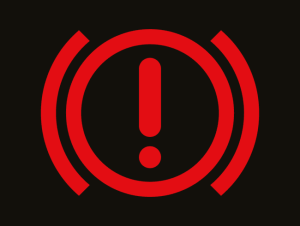
If you notice the red brake warning light, it indicates a brake system malfunction, requiring immediate attention. Brake pad wear can cause the brake pedal to be harder to operate, and if left unchecked, may lead to more severe issues.
Traction Control Warning Light
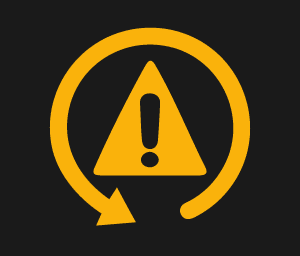
The traction control system helps improve traction in slippery conditions, but a failure can be indicated by an illuminated light. Traction control failure can lead to reduced vehicle stability, so it’s essential to address the issue promptly.
If you experience any brake-related issues, have your vehicle checked and serviced as soon as possible to guarantee your safety on the road and to ensure your security while driving.
Electrical and Battery Issues
Faults with the electrical system, including the battery, can leave you stranded or compromise your safety on the road.
Battery Warning Light
If your Chevy Tahoe’s red battery light comes on, it indicates a fault with the electrical charging system, often due to a failing alternator or aan geing battery. This requires immediate attention to prevent being stranded.
Regular battery maintenance, such as checking connections and electrolyte levels, can help prevent electrical faults. If you’re experiencing issues, switch off non-essential electrical equipment to extend driving ability.
Have the fault diagnosed as soon as possible to prevent further damage.
Cooling and Temperature Systems
While dealing with electrical issues, it’s also important to keep an eye on your Chevy Tahoe’s temperature gauges to prevent overheating.
Engine Temperature Warning Light
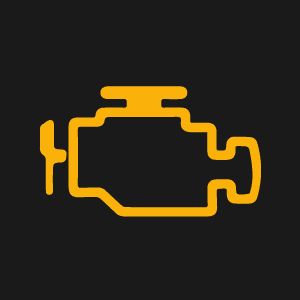
You should regularly check your coolant level to verify it’s at the recommended level. If the coolant level is low, you’ll need to top it off or have it checked by a professional.
A faulty temperature sensor can also cause issues, so it’s essential to have it diagnosed and replaced if necessary.
If your engine overheats, you’ll see a red warning light on your dashboard. In this case, pull over and turn off the engine as soon as possible to avoid damage.
Tire Pressure and Wheels
Properly inflated tires are crucial for your Chevy Tahoe’s overall performance, safety, and fuel efficiency.
TPMS Warning Light
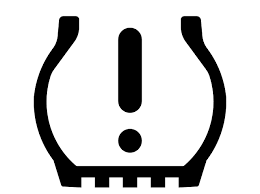
Underinflated tires can lead to uneven tire wear, reduced fuel efficiency, and increased risk of a blowout. The Tire Pressure Monitoring System (TPMS) warning light on your dashboard will illuminate if one or more tires is detected underinflated.
Check your tire pressure regularly, as specified in your owner’s manual, and adjust as needed.
Additionally, guarantee your wheels are properly aligned to prevent uneven tire wear. Misaligned wheels can also affect your vehicle’s handling and stability.
If you notice uneven tire wear or your vehicle is pulling to one side, have your wheel alignment checked and adjusted as needed.
Advanced Safety System Warnings
Forward Collision Alert Warning Light
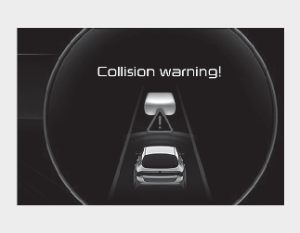
This amber car-with-stars symbol indicates a malfunction in the front crash avoidance system. When functioning properly, it provides visual and audible alerts when approaching vehicles too quickly. Clean the front radar sensor behind the grille if obstructed. Persistent warnings require professional diagnosis.
Pedestrian Detection Warning Light
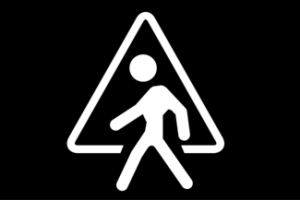
This yellow person-with-exclamation symbol appears when the pedestrian alert system is unavailable. The system may be temporarily disabled due to heavy rain, fog, or sensor obstructions. Clean front camera and radar sensors to restore functionality.
Hybrid/Electric System Alerts (for Hybrid Models)
Hybrid Battery Cooling Warning Light
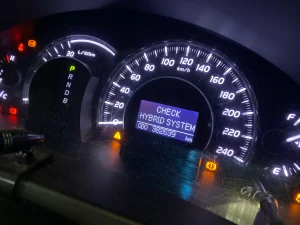
This red battery-with-fan symbol indicates cooling system failure for the high-voltage battery. The vehicle may reduce power output to prevent damage. Immediately reduce speed and seek professional service to avoid costly battery repairs.
Regenerative Braking Warning Light
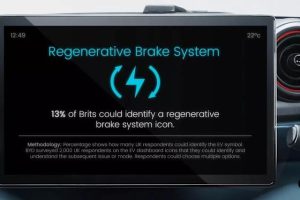
This amber circular-arrow symbol signals faults in the energy recovery system. The hybrid system temporarily disables regenerative braking, affecting fuel efficiency. Typically caused by brake system or battery management issues requiring diagnosis.
Advanced Suspension Warnings
Magnetic Ride Control Warning Light

This yellow shock-absorber symbol appears when the adaptive damping system malfunctions. The suspension defaults to standard mode. Common causes include faulty damper valves or sensor issues requiring professional calibration.
Air Suspension Overload Warning

This red car-with-arrow symbol indicates the air suspension is at maximum capacity. Reduce vehicle load immediately to prevent system damage. The warning clears automatically when weight is reduced to safe levels.
Lighting System Warnings
Automatic High Beam Warning Light

This blue headlight-with-A symbol indicates faults in the automatic high beam assist system. The system reverts to manual control when malfunctioning, typically due to dirty windshield sensors or electrical faults.
LED Headlight Malfunction Light

This amber headlight symbol appears when there’s an electrical fault in the LED lighting system. Individual LED modules may fail, requiring professional diagnosis and potential headlight assembly replacement.
Additional Driver Assistance Warnings
Blind Spot Monitoring Warning Light
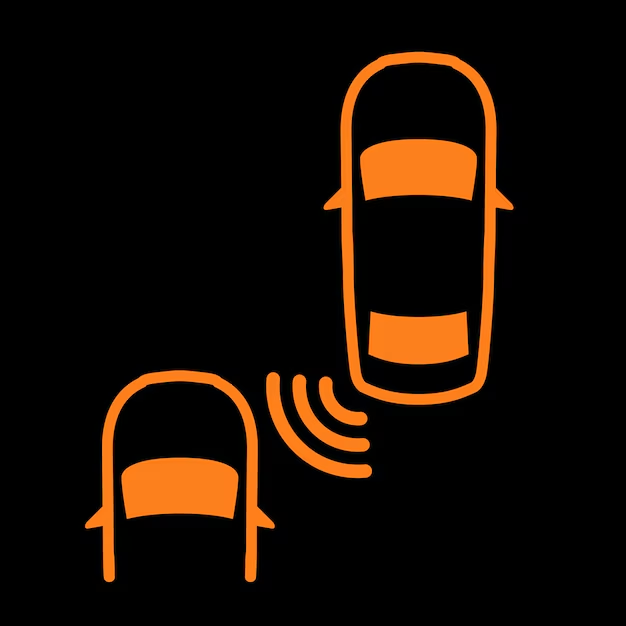
This yellow triangle-in-mirror symbol appears when a vehicle is detected in your blind spot. The light intensifies if you activate the turn signal in that direction. System may be unavailable in heavy rain or when sensors are obstructed.
Rear Cross Traffic Alert Warning Light
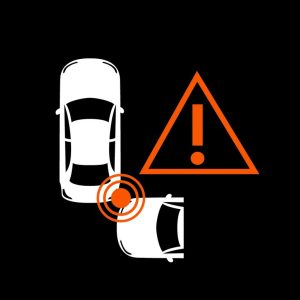
This yellow car-with-arrows symbol indicates faults in the rear cross-traffic detection system. When functioning properly, it warns of approaching vehicles when reversing. Clean rear radar sensors to restore functionality.
Additional Warning Lights
48V Mild Hybrid System Warning
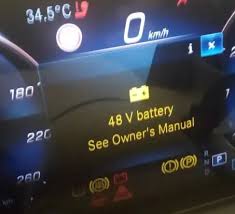
For models with GM’s eAssist system, this amber battery symbol indicates faults in the 48V electrical system. The vehicle may disable start/stop function and other efficiency features until repaired.
Trailer Brake System Warning
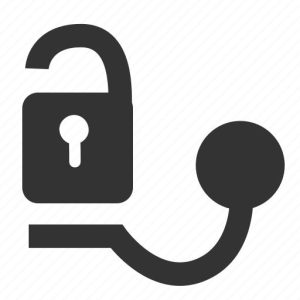
This yellow trailer-with-exclamation symbol appears when there are faults in the integrated trailer brake controller. Check wiring connections and have the system diagnosed before towing heavy loads.
Keyless Start System Warning

This yellow key-with-exclamation symbol signals faults in the push-button start system. The vehicle may not recognize the key fob. Try placing the fob in the emergency start position and replace the fob battery if needed.
Panoramic Roof Warning Light
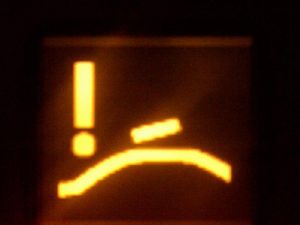
This amber roof symbol indicates sunroof or sunblind malfunctions. The anti-trap protection may activate repeatedly. Requires reset procedure or motor replacement by qualified technicians.
Remember that warning light colors indicate urgency:
- Red: Stop driving immediately (safety critical)
- Yellow/Amber: Service required soon
- Green/Blue: System status information
Always consult your owner’s manual when warning lights appear and seek professional diagnosis for persistent warnings to maintain your Chevy Tahoe’s performance, safety and longevity. The vehicle’s advanced diagnostic systems provide detailed fault codes that help technicians quickly identify and resolve issues.
Additional Warning Lights
Check Engine Light
This amber engine-shaped symbol indicates potential issues with your vehicle’s emissions system or engine performance. While not always urgent, persistent illumination requires diagnostic scanning to identify specific fault codes and prevent potential damage to critical engine components.
Oil Pressure Warning Light
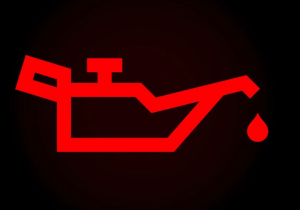
This red oil can symbol indicates critically low oil pressure. Stop driving immediately to prevent severe engine damage. Check oil levels and look for leaks before restarting your vehicle. Continued operation with this warning light on may lead to catastrophic engine failure.
Service Vehicle Soon Light
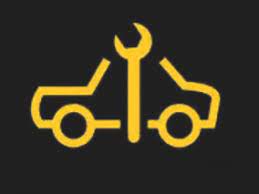
This yellow wrench symbol appears when your vehicle detects a non-critical issue that requires attention. While not an emergency, schedule service soon to address the underlying problem and maintain optimal vehicle performance and reliability.
Security Warning Light
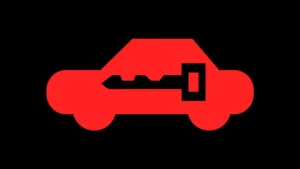
This red car-with-key symbol flashes when the vehicle’s anti-theft system is armed. Continuous illumination indicates an immobilizer system fault that may prevent engine starting. Have the system diagnosed if the light remains on while driving.
Fuel System Warning Light

This yellow gas pump symbol appears when there are issues with your fuel system. Potential causes include a loose gas cap, fuel pump failure, or fuel injector problems. Address promptly to maintain proper engine performance and fuel efficiency.
ABS Warning Light
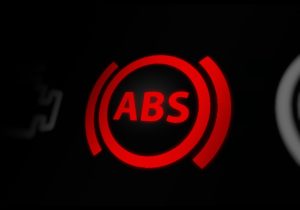
This amber ABS symbol indicates a fault in the anti-lock braking system. While conventional brakes still function, ABS and stability control features will be disabled until repaired. Have the system checked to restore full braking capabilities.
Transmission Temperature Warning
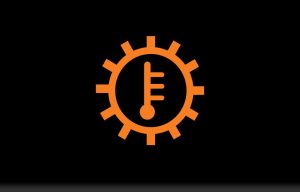
This red thermometer-in-gear symbol appears when transmission fluid is overheating. Common when towing heavy loads. Stop immediately to prevent transmission damage and allow the system to cool before continuing your journey.
4WD System Warning
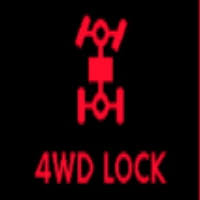
This yellow 4WD symbol indicates faults in the four-wheel-drive system. The vehicle may default to two-wheel drive until repaired. Have the system diagnosed to restore full four-wheel-drive functionality when needed.
Lane Departure Warning Light
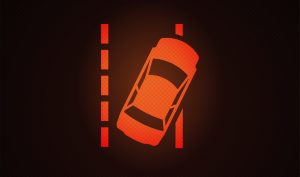
This amber lane symbol flashes when unintentional lane drift is detected without turn signal use. The system may provide steering wheel vibration alerts. Automatically deactivates below 40 mph or when turn signals are engaged.

